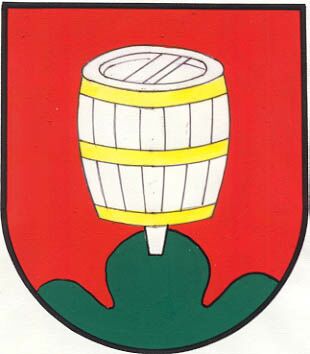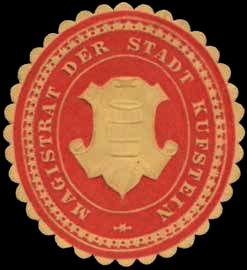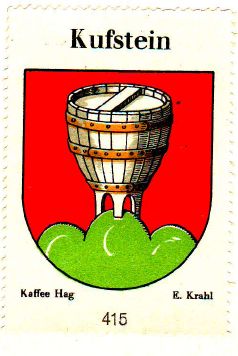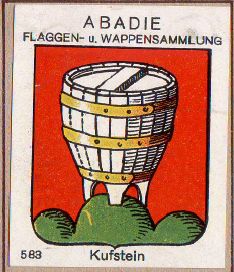Kufstein: Difference between revisions
Jump to navigation
Jump to search
Knorrepoes (talk | contribs) |
Knorrepoes (talk | contribs) |
||
| Line 14: | Line 14: | ||
|align="center"|[[File:kufsteinz1.jpg|center]] <br/>Seal from around 1900 | |align="center"|[[File:kufsteinz1.jpg|center]] <br/>Seal from around 1900 | ||
|align="center"|[[File:kufstein.hagat.jpg|center]] <br/>The arms in the [[Kaffee Hag : Die Wappen der Republik Oesterreich|Coffee Hag album]] +/- 1932 | |align="center"|[[File:kufstein.hagat.jpg|center]] <br/>The arms in the [[Kaffee Hag : Die Wappen der Republik Oesterreich|Coffee Hag album]] +/- 1932 | ||
|align="center"|[[File:0583.aba.jpg|center]] <br/>The arms in the [[Abadie]] albums | |||
|} | |} | ||
Revision as of 17:36, 5 September 2015
KUFSTEIN
State : Tirol
District : Kufstein
Origin/meaning
The arms are first seen on the local seal of Kufstein dating from 1376. The seal showed a canting Kufe, or salt barrel, above some mountains rising from some waves. The barrel obviously was chosen as a canting symbol and a symbol for the salt mining in the area. The mountains and waves are symbols for the surroundings. During later centuries the waves disappeared and the mountains gradually changed into the present mountain.
| Seal from around 1900 |
The arms in the Coffee Hag album +/- 1932 |
The arms in the Abadie albums |
Contact and Support
Partners:
Your logo here ?
Contact us
© since 1995, Heraldry of the World, Ralf Hartemink 
Index of the site
Literature : Köfler and Beimrohr, 1995













